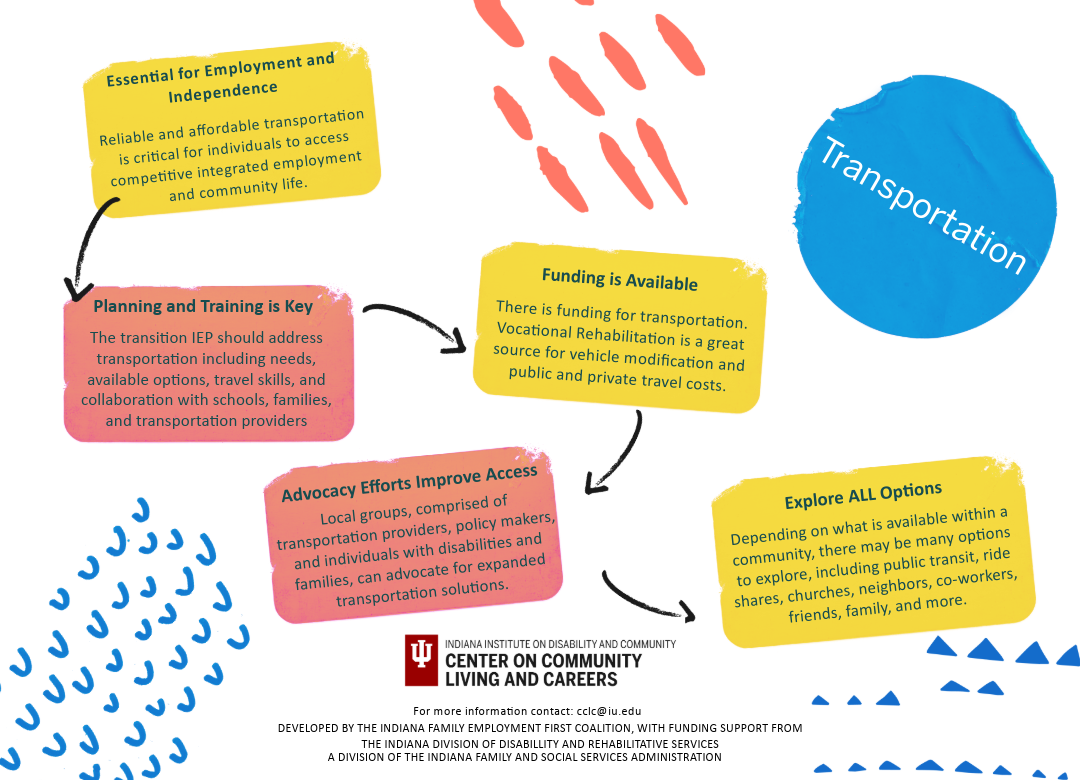Key Aspects of Transportation Planning
Transition teams should routinely visit the topic of transportation and incorporate it into a student’s individualized transition plan. There is an abundance of transportation goals that can be established for students with disabilities. From obtaining a driver’s license, to navigating a bus route, students with disabilities should be involved in the decisions surrounding how they will get to and from work.
Many communities are working hard to address transportation challenges within their area and new and innovative options are being developed frequently.
Below is a short guide to transportation planning. We invite you to visit our resources below for a more in-depth explanation of the process.
- Conduct a needs assessment to determine a student’s current transportation abilities and limitations, including physical mobility, learning strategies, and any sensory needs.
- Collaborate with a team of school staff, community transportation providers, and relevant agencies to review transportation options and potential barriers.
- Identify transition goals to incorporate into the transition plan, focusing on skills like navigating public transportation and using assistive devices.
- Coordinate transportation training and support with transportation providers directly and teach students how to communicate their needs.
- Explore transportation options including school provided services, public transportation, personal vehicles, and ride sharing.
- Address accessibility concerns to identify any physical barriers at bus stops, transportation hubs, or other access points.
Be sure to check out the resources below when planning your next steps towards employment.


